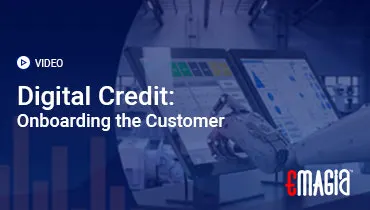For any business, sound financial health hinges on efficient cash flow. While sales generate revenue, it’s the effective collection of payments for services rendered that truly fuels liquidity. This is particularly true for service-based businesses.
In service industries, the primary “product” is often intangible. Invoicing can be complex. Client relationships are paramount. Effective accounts receivable management is not just an accounting function; it’s a strategic imperative.
This directly impacts profitability, client satisfaction, operational stability. Understanding what is accounts receivable management specifically means for service providers is crucial.
Unlike product-based companies with tangible goods, service businesses must meticulously track time, deliverables, project milestones. This often leads to unique challenges in invoicing, payment terms, dispute resolution.
This comprehensive guide will delve into the nuances of accounts receivable management for service businesses, exploring core concepts like what is meant by accounts receivable. We will detail essential accounts receivable best practices.
We will examine the role of an accounts receivable management system or accounts receivable platform. Our aim is to offer solutions to common pain points, ultimately helping you improve your cash flow secure your financial future. Let’s explore how to effectively manage accounts receivable in your service-oriented enterprise.
Defining Accounts Receivable: The Foundation of Managing Receivables
Before diving into management strategies, it’s essential to clarify what are accounts receivable their significance for service providers. A solid understanding forms the basis for effective management of receivables.
What is Meant by Accounts Receivable: A Service Business Perspective
At its core, what is meant by accounts receivable refers to the money owed to your business by clients for services already delivered but not yet paid for. For service businesses, this includes billed hours, completed project phases, retainer fees, or other contractual agreements.
These are current assets on your balance sheet, representing a promise of future cash inflow. Unlike product sales where ownership transfers instantly, service provision often involves a longer cycle from delivery to payment.
What is a Receivable: Understanding Your Client Debts
In simple terms, what is a receivable is an individual invoice or amount due from a client. Each service rendered that is not paid for immediately creates a receivable. These individual receivables aggregate to form your total accounts receivable balance.
For service businesses, each receivable is typically tied to a specific project, hourly log, or service agreement. This makes clear documentation vital for effective account receivable management.
What Does Accounts Receivable Manage: Beyond Just Invoices
What does accounts receivable manage involves more than just sending invoices. It encompasses the entire order-to-cash cycle for service businesses. This includes setting credit terms, accurate billing, timely invoicing, diligent follow-up, effective dispute resolution, right through to cash application.
It’s about optimizing the conversion of services provided into actual cash, ensuring financial health. This comprehensive scope defines what is accounts receivable management in practice.
Unique Challenges in Accounts Receivable Management for Service Businesses
While the principles of accounts receivable management apply universally, service businesses face distinct hurdles that demand tailored strategies for effective management of account receivable.
Invoicing Complexities: Time, Deliverables, Project Milestones
Unlike selling a product with a fixed price, service invoicing can be highly complex. It often involves tracking billable hours, charging for specific deliverables, invoicing upon project milestones, or managing retainers.
This complexity can lead to errors, delays, or client confusion. Such issues directly impact collection speed. Accurate, transparent invoicing is a critical component of managing accounts receivable effectively for service providers.
Relationship Management Versus Collections: A Delicate Balance
For service businesses, client relationships are paramount for repeat business referrals. Aggressive collection tactics can jeopardize these relationships.
However, overly lenient approaches can lead to delayed payments or bad debt. Striking the right balance—maintaining client goodwill while ensuring timely payments—is a unique challenge in accounts receivable management for service businesses.
Dispute Resolution: Clarifying Intangible Service Value
Disputes in service-based accounts receivable often stem from differing perceptions of service value, scope creep, or misunderstandings about deliverables. Resolving these requires clear documentation, open communication, a deep understanding of the service provided.
Unlike product returns, service quality can be subjective. This makes dispute resolution a nuanced aspect of account receivables management.
Lack of Tangible Proof: Supporting Service Delivery for Payment
Without a physical product, proving service delivery or its value can be challenging. This makes meticulous record-keeping of time logs, project updates, client approvals, communication crucial.
Robust documentation is essential for justifying invoices resolving payment discrepancies. This directly impacts the effectiveness of your accounts receivable process.
Accounts Receivable Best Practices for Service Business Success
Implementing targeted accounts receivable best practices is essential for service businesses to improve cash flow reduce financial risk. These strategies form a solid accounts receivable portfolio strategy.
Clear Contract Agreements: Setting Expectations for Payments & Receivables Management
Robust, clear contracts are the first line of defense in accounts receivable management. They should explicitly state service scope, pricing, payment terms, invoicing schedule, dispute resolution procedures.
Ambiguity in contracts is a leading cause of payment delays disputes. Setting expectations upfront is a cornerstone of effective payments & receivables management.
Timely Accurate Invoicing: Accelerating Your Accounts Receivable Process
Issuing invoices promptly accurately is crucial. Delays in invoicing push back payment dates, while errors necessitate corrections that prolong the collection cycle.
Automating invoicing where possible, establishing internal review processes, sending invoices immediately upon service completion or milestone achievement are key accounts receivable best practices to accelerate the accounts receivable process.
Proactive Client Communication: The Accounts Receivable Follow-Up Strategy
Effective accounts receivable follow-up is about proactive, polite communication, not just reactive dunning calls. This includes sending payment reminders before due dates, personalized follow-up emails on overdue invoices, regular account statements.
Maintaining consistent, professional communication fosters positive client relationships helps resolve issues early. This strengthens your accounts receivable program.
Streamlined Dispute Resolution: Managing Accounts Receivable Effectively
Establish a clear, efficient process for handling client disputes. Assign a dedicated person or team to investigate claims, gather documentation, communicate solutions promptly.
Swift, fair resolution prevents invoices from aging unnecessarily. It also reduces the risk of bad debt. This systematic approach is vital for managing accounts receivable successfully in a service context.
Offering Flexible Payment Options: Enhancing Collection Convenience
Making it easy for clients to pay can significantly improve collection speed. Offer multiple payment methods such as online portals, credit card processing, ACH transfers.
Consider offering early payment discounts or flexible payment plans for larger projects, where appropriate. These conveniences can accelerate cash flow improve client satisfaction. They aid your account receivable solution.
Regular Accounts Receivable Monitoring System: Identifying Risks Early
Implement an accounts receivable monitoring system to regularly track key metrics such as Days Sales Outstanding (DSO), aging reports, collection effectiveness rates.
Early identification of overdue accounts or deteriorating payment trends allows for proactive intervention. This prevents small issues from becoming long term accounts receivable problems. Continuous monitoring is a hallmark of good management of receivables.
Leveraging Technology for Advanced Accounts Receivable Management Solutions
To truly excel at accounts receivable management for service businesses, leveraging specialized technology is no longer optional; it’s a necessity. This includes various accounts receivable management solutions.
Choosing an Accounts Receivable Management Software or Platform
Investing in dedicated accounts receivable management software or an accounts receivable platform centralizes all AR activities. These systems automate invoicing, cash application, collections workflows, reporting.
They provide a unified view of your receivables portfolio. Selecting the right ar management software is a critical decision for scaling your AR operations.
Integrated Accounts Receivable Accounting Software for Seamless Data Flow
Look for accounts receivable accounting software that integrates seamlessly with your existing ERP or accounting systems (e.g., QuickBooks, NetSuite, SAP). This integration ensures accurate data flow.
It eliminates manual entry, provides real-time financial insights across all departments. For instance, while some might consider how to manage accounts receivable in lacerte software, the principle of seamless integration applies to all accounting environments for efficient accounts receivable system functionality.
Automating Invoicing Collections: Streamlining the Accounts Receivable Process
Automation is key to streamlining the accounts receivable process. Automated invoicing reduces errors ensures timely delivery. Automated reminders follow-up sequences ensure consistent communication.
Robotic Process Automation (RPA) can handle routine tasks like cash application, freeing up AR staff for more complex problem-solving. This automation is a core feature of modern accounts receivables solutions.
Data Analytics for Accounts Receivable Portfolio Management
Advanced accounts receivable management solutions offer robust data analytics capabilities. These allow for in-depth analysis of your accounts receivable portfolio management.
They identify trends in payment behavior, predict bad debt, segment customers by risk or payment patterns. This data-driven approach enhances your accounts receivables portfolio strategy, turning raw data into actionable insights for better decision-making. This falls under sophisticated receivable management services.
Cloud-Based Accounts Receivable Platforms: Accessibility Security
Cloud-based accounts receivable platform solutions offer flexibility, accessibility from anywhere, enhanced data security. They eliminate the need for on-premise infrastructure, provide automatic updates, ensure business continuity.
For service businesses with remote teams or diverse client bases, cloud solutions are ideal for efficient asset receivables management.
Measuring Success: Key Metrics for Service Business AR Management
Effective accounts receivable management relies on continuous monitoring measurement. Tracking key metrics helps assess performance identify areas for improvement in your account receivable management efforts.
Days Sales Outstanding (DSO): Gauging Collection Efficiency
DSO measures the average number of days it takes a business to collect payment after a sale. For service businesses, a lower DSO indicates efficient billing prompt collections.
Monitoring DSO trends over time or by client segment can reveal areas where the accounts receivable process needs refinement.
Aging Report Analysis: Identifying At-Risk Long Term Accounts Receivable
An aging report categorizes invoices by their overdue period (e.g., 30, 60, 90+ days). This vital tool helps prioritize collection efforts identify long term accounts receivable that are at higher risk of becoming uncollectible.
Regular analysis allows for proactive intervention. This prevents bad debt.
Collection Effectiveness Index (CEI): Assessing Management of Receivables
CEI measures the percentage of collectible receivables actually collected within a period. A high CEI indicates strong collection performance efficient management of receivables.
It’s a comprehensive metric that evaluates the overall effectiveness of your accounts receivable program.
Bad Debt Percentage: Impact of Ineffective Accounts Receivable Management
This metric tracks the portion of total receivables that are deemed uncollectible. A rising bad debt percentage signals problems in credit assessment, invoicing, or collection processes.
Keeping this figure low is a key objective of effective accounts receivable management.
Emagia’s Impact: Revolutionizing Accounts Receivable Management for Service Businesses
For service businesses striving to optimize their cash flow, minimize bad debt, enhance client relationships, Emagia offers a transformative solution. It’s designed to tackle the unique challenges of accounts receivable management for service businesses.
Emagia’s AI-powered accounts receivable platform provides an unparalleled advantage. It automates complex invoicing for project-based time-based billing, significantly reducing errors accelerating payment cycles.
Our intelligent accounts receivable monitoring system leverages machine learning to predict client payment behaviors. This enables proactive, personalized accounts receivable follow-up that balances firm collections with client retention.
The system streamlines dispute resolution by centralizing communication documentation. It ensures swift, fair outcomes that protect valuable client relationships. Emagia provides deep data analytics on your accounts receivables portfolio strategy, offering actionable insights.
These insights help segment clients, optimize credit policies, forecast cash with precision. With seamless integration into existing accounting systems, Emagia ensures data accuracy eliminates manual reconciliation. It gives service businesses the tools they need to achieve superior management of accounts receivable, accelerate cash flow, solidify financial health for long-term success. It’s truly a comprehensive account receivable solution for the modern service enterprise.
Frequently Asked Questions About Accounts Receivable Management for Service Businesses
What is the primary difference in AR management for service versus product businesses?
The primary difference in accounts receivable management for service businesses lies in their intangible nature. Service invoicing often involves time tracking, project milestones, or retainers. This makes billing more complex.
Proving service delivery can be harder than showing a tangible product. This impacts dispute resolution client relationships.
Why is proactive communication crucial in service business accounts receivable?
Proactive communication is crucial because it helps manage client expectations, clarifies service scope, addresses potential issues before they become disputes.
Regular, polite accounts receivable follow-up reminders foster stronger client relationships ensure transparency. This leads to faster payments improved management of receivables.
What are the top challenges service businesses face with accounts receivable?
Top challenges include complex invoicing (time-based vs. project-based), balancing collections with maintaining strong client relationships, resolving disputes over intangible service value, proving service delivery without a physical product, difficulty in tracking varied billing cycles.
These factors complicate traditional accounts receivable process workflows.
How can technology improve accounts receivable management for service companies?
Technology significantly improves accounts receivable management for service companies by automating complex invoicing, streamlining cash application, enabling intelligent collections workflows, centralizing client communication, providing robust data analytics for portfolio insights.
An accounts receivable management system reduces manual errors accelerates cash flow.
What are essential accounts receivable best practices for service providers?
Essential accounts receivable best practices for service providers include clear contract agreements, timely accurate invoicing, proactive client communication, a streamlined dispute resolution process, offering flexible payment options, regular monitoring of AR metrics.
These practices help manage accounts receivable efficiently.
Can accounts receivable management software handle project-based billing?
Yes, many modern accounts receivable management software solutions are specifically designed to handle project-based billing, time-based invoicing, retainer management.
They can automate complex invoicing schedules, track project milestones, generate detailed client statements. This greatly simplifies accounts receivable accounting software needs for service businesses.
Conclusion: Strategic Accounts Receivable Management for Enduring Service Business Success
For service businesses navigating a competitive landscape, robust accounts receivable management transcends routine accounting. It is a strategic pillar for enduring success.
The unique challenges inherent in managing receivables for intangible services demand a specialized approach—one built on clarity, efficiency, intelligent client engagement. From meticulous contract agreements to proactive accounts receivable follow-up, every step in the process directly influences cash flow, profitability, client satisfaction.
Embracing advanced accounts receivable management solutions represents a pivotal investment. By leveraging the power of automation, AI-driven insights, centralized accounts receivable platforms, service providers can overcome invoicing complexities, streamline collections, mitigate bad debt, foster stronger client relationships.
Effective management of account receivable empowers businesses to maintain healthy liquidity, make informed strategic decisions, ensure sustainable growth. In essence, mastering accounts receivable management for service businesses is about transforming outstanding invoices into a consistent, predictable stream of cash, securing a prosperous future.



